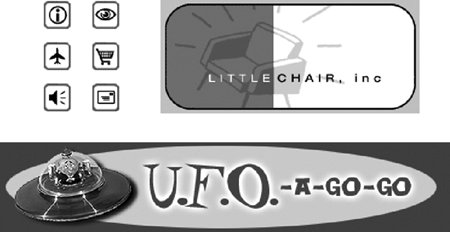Chapter 29. GIF Format
| GIF (Graphic Interchange Format) was the first graphic file type to be displayed by early web browsers, and it remains one of the most popular and versatile formats for distributing color images on the Web to this day. The GIF format was originally developed by CompuServe in 1987 to distribute images over their network to a variety of platforms (this is why you sometimes see GIFs referred to as "CompuServe GIF"). GIF files have the following characteristics:
Any image can be saved as a GIF, but the format is most appropriate for images with areas of flat, solid color, such as logos, icons, charts, and so on (see Figure 29-1). Even if the image contains some photographic elements, if the majority of the image is flat color, GIF is your best bet. GIF is also a good option if you want portions of your image to be transparent, and it's your only option if you want the graphic to contain animation. The GIF format is not particularly good for photographic images, because quality suffers as a result of the reduction to 256 colors and its compression scheme cannot work efficiently, resulting in larger files. Use JPEG for photos instead. This chapter begins with further explanation of each of the features listed at the beginning of this chapter (with the exception of animation, which is covered in detail in Chapter 32). The second half of the chapter provides tips for creating GIFs, minimizing file size, and working with the web palette. Figure 29-1. Examples of images well suited for GIF format
|
EAN: 2147483647
Pages: 325